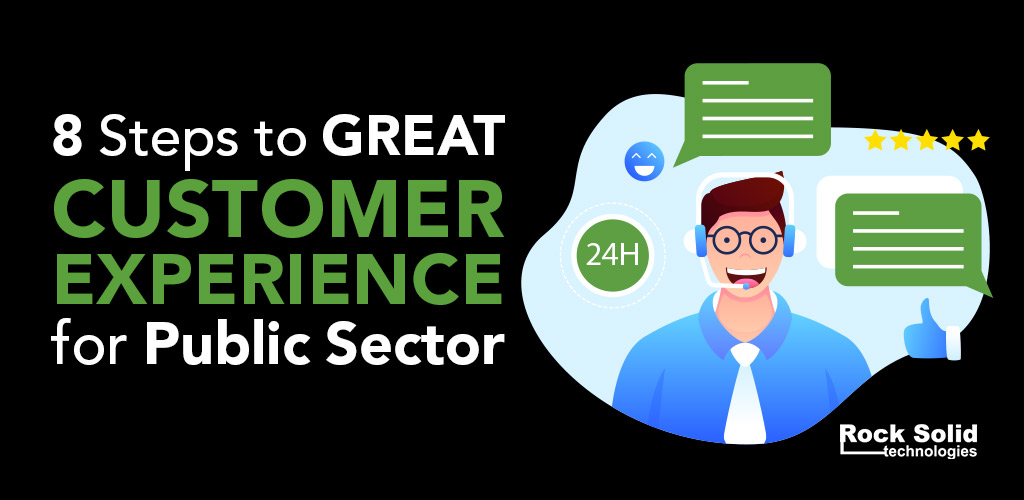Just because the benefits of technology are clear doesn’t
mean it’s easy to innovate. City halls and local governments have to overcome
barriers to adoption first, which is why it’s
important to start small and focus on the most pressing problems in order to
demonstrate the value of government technology to both officials and residents.
We’ll divide the guide into three steps that must be taken in
order to foster innovation needed to create a mobile city hall residents will
appreciate.
Step 1: Introducing Local Government Innovation
Before we start implementing new systems, it’s important to
get everyone on board because of the main two barriers to government tech
implementation at this stage:
The Legislative Barrier – Proving the value of technology to stakeholders
When discussing the technological changes with the
stakeholders, it’s important to focus on the following key areas:
Costs
If a local government uses a solution like Rock Solid, there won’t be a need for other apps. Every functionality is held under one roof. This reduces the cost of apps many governments struggle with. If a particular local government has the need for additional applications, they can be built and launched through the native Rock Solid platform.
Value to residents
A website citizens can take a look at from their personal computers is the standard. A responsive website that adapts even when they’re on mobile is okay. However, technology’s changing the expectations of residents who are looking for native mobile solutions and advanced functionality offered by GIS support. Rock Solid offers them the native mobile city hall experience, increasing the value for residents.
Value to public officials
If the officials are already accustomed to particular software for asset management, permitting and other functions, Rock Solid integrates seamlessly with existing systems. There’s no learning curve, which makes implementation at a large scale much easier and faster. Constituent relationship management and 311 functions have been made easy, as well.
The Constituent Barrier – Proving the value of technology to citizens
Once we obtain the legislative permission, it’s important to
acquaint the general public with the strategy for upcoming government
innovation through the following categories:
The background story
Explain why this is necessary, how the process will be implemented, and what the residents can expect to happen within the next few months or years.
High-priority issues
In order to demonstrate the value to residents as soon as possible, it’s important we focus on high-priority issues that residents struggle with the most.
No two city halls are the same (and neither are their
constituents) so it’s important to personalize
the approach and put the most
pressing issues at the forefront of any technologically-innovative
initiative.
Increasing satisfaction
Depending on the state of a local government’s tech innovation, more or less feedback will be required. However, it’s important that the city halls and constituents consistently communicate in order to improve the process for everyone involved. For example, some cities who’ve implemented the smart city initiative have formed action groups where public officials and residents can exchange opinions on the next steps.
Not only does this increase resident satisfaction with city hall services, but it also makes it easier to prioritize projects.
Step 2: Fostering Innovation in Government
Technology can go a long way towards fostering innovation in
the public sector, but the culture is what makes or breaks it.
Step two is oriented towards creating a culture of
sustainable innovation, and it requires both public officials and residents to
participate.
Managing risks and opportunities – Innovation is exciting, and with technology like Rock Solid, it gets the support it needs from systems.
However, innovation also needs support from people. In order
to develop the government as a platform concept, local government should also define norms and rules for managing
different risks and opportunities associated with new technology.
Too many rules can stifle innovation, so the best practice advice for breaking that particular barrier is to
form special departments that will focus on building the culture of innovation.
Or, in the very least, determine public officials whose sole focus will be on
establishing new practices and monitoring projects.
In addition to the public sector, city halls can also find partners in local businesses and
individuals willing to work with them at creating a better experience.
Step 3: Sustaining and Scaling the Innovative Practices
Just like a house, innovation in government should be
maintained once the structure has been built.
Since risks and costs are associated with each city hall
project (and even more so with something innovative), it’s important to adopt
the right approach:
Step by Step
If the agile principle is implemented, major breakthroughs can be broken into smaller segments. They can then be tested easily, and at reduced costs in case they’re not successful. Resident feedback also helps, and so do continuous iterations that the agile principle stands for.
Encouraging Collaboration
The key to building a culture of innovation is creating a steady stream of projects that public officials and residents can work together on. However, it’s important to create a platform that’s open to suggestions from citizens and local partners to streamline mobile city hall services, scale innovation in government, and ensure that the focus is on resolving the most pressing problems for residents.
Tracking the efforts
The key to innovation is having a system that can tell us exactly what we’re doing right, wrong, and how we’ve reached satisfying outcomes.
This is especially important when government tech helps us
facilitate multiple large-scale projects.
By following the agile approach that enables step by step
bite-sized testing, we can minimize risks and modify the projects so that we
are ultimately able to make major breakthroughs with reduced risks.
And in order to get rid of the red tape associated with anything
to do with the government (on the resident or on the official site), we can use
native solutions like Rock Solid
that allow us to perform all the necessary functions and stimulate innovation
at the same time.
Soon enough, all the barriers to adoption will evaporate, and innovation will help us create great experiences for everyone making the local community better, day in and day out.

